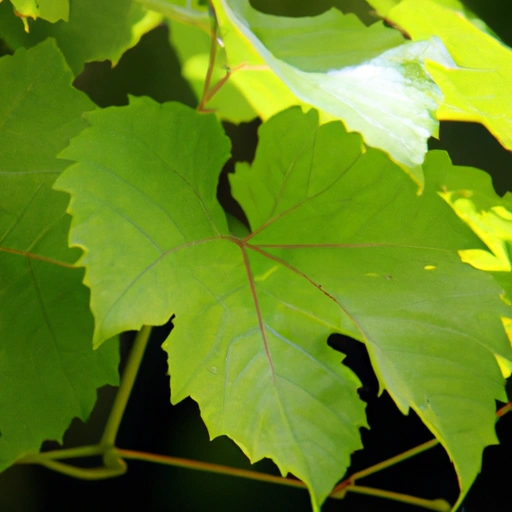Grape Leaf
Description

Grape leaves are the foliage of the grapevine plant, which are not only cultivated for their fruit, but also harvested for their leaves. These leaves have a slightly tangy and robust flavor, making them a unique addition to various culinary traditions around the world. They are often used in recipes that require wrapping or rolling, as they are pliable and can hold fillings well.
Common uses
Grape leaves are commonly used to wrap around rice, meats, and vegetables, creating dishes like dolmas or stuffed grape leaves. They can also be used as a garnish or added to salads for a hint of tangy flavor. In some culinary traditions, grape leaves are preserved in brine and used throughout the year.
Nutritional value
Calories
Grape leaves are low in calories, with approximately 5 to 14 calories per leaf, depending on size.
Protein
They provide a modest amount of protein, with about 0.2 grams per leaf.
Fat
Grape leaves contain a negligible amount of fat.
Carbohydrates
Carbohydrates in grape leaves are minimal, with around 1 to 3 grams per serving (about 28 grams or 1 oz).
Vitamins
They are a good source of vitamins A and K, essential for vision and blood clotting, respectively.
Minerals
Grape leaves also contain minerals like iron and calcium, which are important for maintaining healthy blood and bones.
Health benefits
Due to their nutritional content, grape leaves can contribute to a healthy diet. The fiber in grape leaves helps with digestion, while the vitamins and minerals support various body functions. Additionally, the antioxidants present may help in reducing inflammation and protecting against certain diseases.
Potential risks
Consuming grape leaves is generally considered safe for most people. However, those who are sensitive to certain foods or have specific dietary restrictions should consult with a healthcare provider before including them in their diet, particularly if consuming them in a preserved form with higher sodium content.
Common recipes
One of the most famous recipes using grape leaves is 'dolma', which involves stuffing the leaves with a mixture of rice, herbs, and often meat. Other recipes include salads, casseroles, and pickled grape leaves.
Cooking methods
Grape leaves can be used fresh, but they are often blanched or boiled to soften them before use in recipes. Preserved grape leaves are also commonly available, which are ready to use straight from the jar.
Pairing with other ingredients
The tangy flavor of grape leaves pairs well with lemon juice, yogurt, olive oil, and a variety of spices such as dill, mint, and garlic.
Summary
Grape leaves are a versatile ingredient with a rich history in various cuisines. They offer nutritional benefits and can be used in a myriad of dishes. Whether fresh or preserved, grape leaves can add depth and character to your culinary creations.